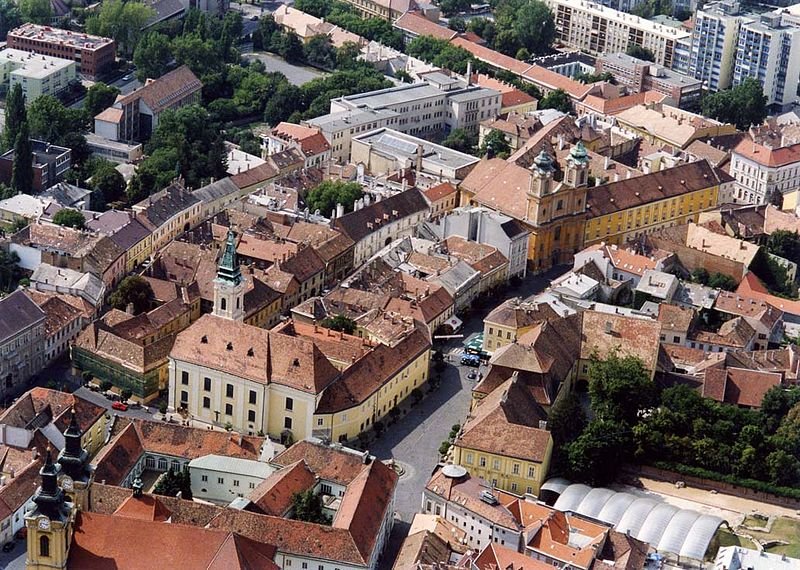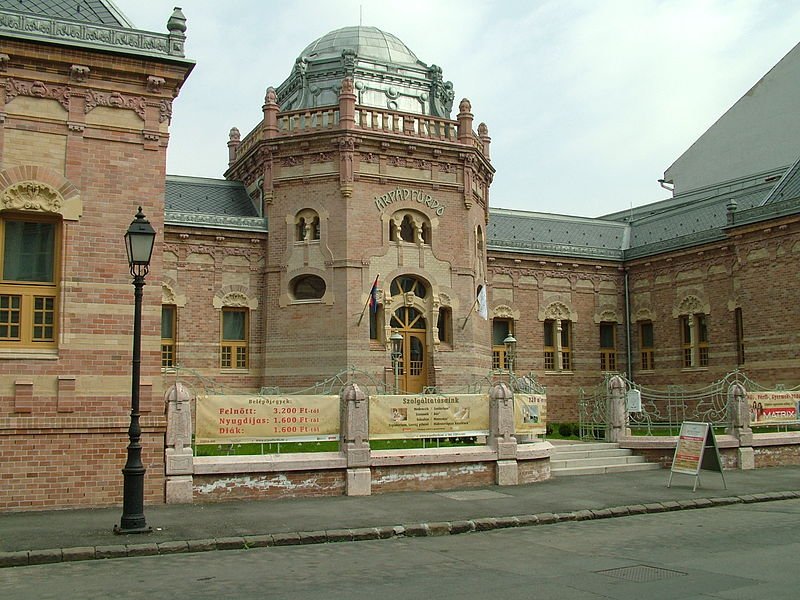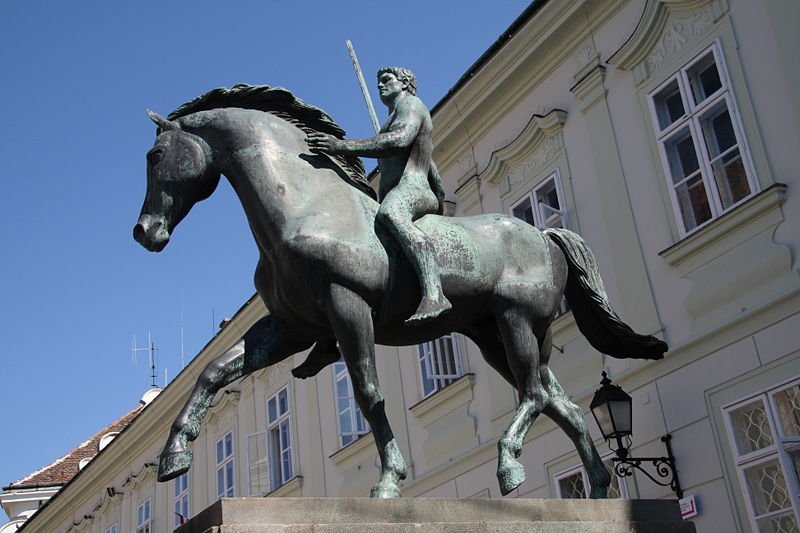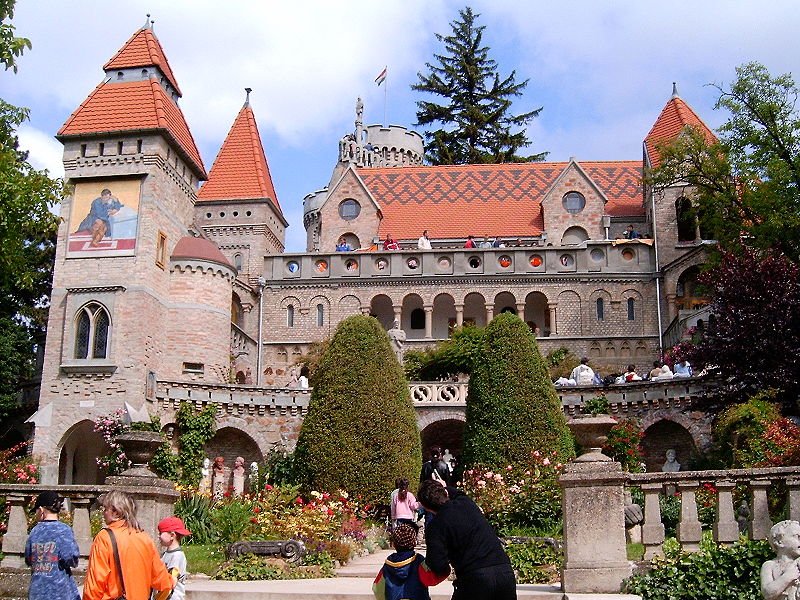 Székesfehérvár, Hungary
Székesfehérvár, HungarySource: https://commons.wikimedia.org/wiki/File:Szekesfehervarcivertanleginew.jpg
Author: Civertan

Székesfehérvár is a city in central Hungary, the county seat of Fejér county and regional center of Central Transdanubia. It covers 170.89 sq km (66 sq mi) and has a population of 102,000 people (2011 estimate), making it the 9th largest city in the country.
The name Székesfehérvár means "seat of the white castle". Located 65 km (40 mi) to the southwest of Budapest, Székesfehérvár has been a royal town since the Middle Ages. Its cathedral was where Hungarian kings ascended the thrown - in total 37 kings and 39 queen consorts were crowned there. It is also the burial place of 15 Hungarian rulers. The sarcophagus holding the first Christian king of the country, St István, is till there today.
Evidence of human habitation in the Székesfehérvár area goves back to the 5th century BC. During Roman times, there were settlements here called Gorsium and Herculia.
 Arpad bath, Székesfehérvár
Arpad bath, SzékesfehérvárSource: https://commons.wikimedia.org/wiki/File:Szekesfehervar_Arpadfurdo.jpg
Author: Riesz József

The modern city of Székesfehérvár was founded in AD 972. It was located on four islands in the marshland. The name Székesfehérvár was first mentioned in 1009. By the 12th century, the town has grown to include a few churches, monasteries and houses.
Székesfehérvár was captured by the Ottomans after a long siege in 1543. Ottoman occupation lasted for 145 years, until 1688. Under Ottoman rule, the city lost its cathedral and royal palaces. The graves of the kings were also desecrated.
 Memorial of 10th Hussar Regiment, commemorating one of the bloodiest battles of World War I in Székesfehérvár
Memorial of 10th Hussar Regiment, commemorating one of the bloodiest battles of World War I in SzékesfehérvárSource: https://commons.wikimedia.org/wiki/File:Szekesfehervar_Tizes_Huszarok_Emlekmuve_01.JPG
Author: Attila Král

After Ottoman rule ended, Székesfehérvár was once again part of the Habsburg Empire. In 1702, Albert of Austria ordered the demolition of the cathedral in which Hungarian kings were crowned. As a result, subsequent coronations were done in Pozsony/Bratislava.
During its years behind the Iron Curtain, Székesfehérvár grew to become an industrial city. Today it attracts multinational companies to set up their base there. Despite being a modern, developed city, Székesfehérvár has a well restored old town with has now been turned into a pedestrian zone lined with many important historical buildings.
 Bory Castle, Székesfehérvár
Bory Castle, SzékesfehérvárSource: https://commons.wikimedia.org/wiki/File:Bory-var_2006_June.jpg
Author: Arpad Horvath

Visiting Székesfehérvár
There are many trains between Budapest and Székesfehérvár. The commuter train takes 80 minutes while the intercity service, called gyors, stops only at Kelenföld, takes 65 minutes.Places of Interest in Székesfehérvár
- Black Eagle Pharmacy Museum (Fekete Sas Patikamúzeum)
Two-storey Baroque building from 1774 today displaying items related to pharmacy in Székesfehérvár. - Bory Castle (Bory Vár)
This whimsical castle, built over two decades in the mid-1920s, has become one of the most popular tourist attractions in Székesfehérvár today. - Budenz House and Ybl Collection (Budenz-ház & Ybl-gyűjtemémy)
Collection of furniture, family portraist and religious art belonging to architect Miklos Ybl was given to the state by descendant Ervin Ybl on his death in 1965, and now available for public display. - Carmelite Church (Karmelita templom)
Church that was already consecrated, just a year after construction started in 1732 - long before it was completed, in 1769. - Deák Collection (Városi Képtár Deák-gyűjtemény)
The collection of Dénes Deák includes works from the early 20th century to contemporary abstract art. Sculptures and graphic art are also included in the collection. - Open-Air Ethnographical Museum (Palotavárosi Skanzen)
Set up in the Serb neighbourhood of Székesfehérvár, this open-air museum near the city center provides a glimpse into the traditional life and trades of the Serb community in Székesfehérvár. - St Anne's Chapel
15th century chapel that is the only religious building to survive Ottoman rule. - St István's Cathedral
Church founded by Béla IV and later renovated in the Baroque style, this was part of the original church were the Hungarian rulers were crowned. It was made a cathedral in 1777. - St István Király Museum (Szent István Király Múzeum)
Friary of the Cistercian church. It houses artifacts that include the earliest Neolithic items to Roman treasures. Its most recent major discovery was part of the sarcophagus of St István. - Székesfehérvár Doll Museum (Fehévári Babaház)
Located in the former offices of the county governor, this museum has the largest collection of 18th century dolls in the country. Also included are tin soldiers and other toys.
 Latest updates on Penang Travel Tips
Latest updates on Penang Travel Tips

Copyright © 2003-2025 Timothy Tye. All Rights Reserved.

 Go Back
Go Back